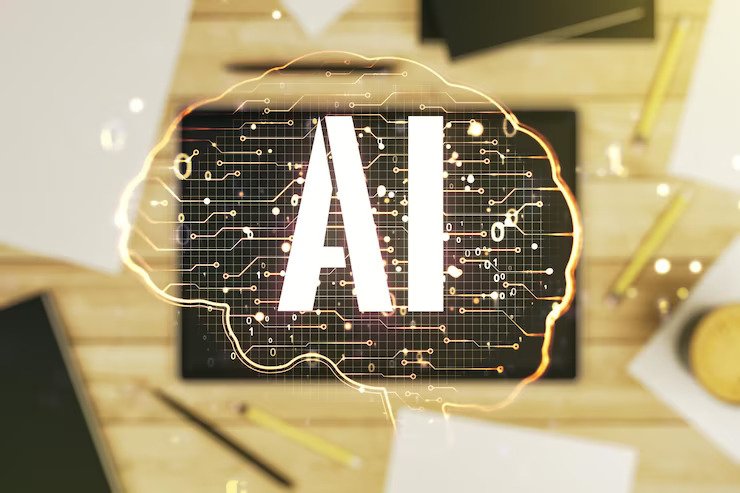The Future Is Here! Exploring AI’s Role in UI Anomaly and Detection

Companies frequently deploy new releases daily. With each update or modification to existing code, even the slightest change can disrupt the functionality of the user interface (UI), thus affecting the overall user experience.
Research shows that a website’s visual appeal is critical in shaping users’ initial impressions and influencing their perception of a business’s credibility. Consequently, successful companies have embraced the integration of visual testing as an integral part of their testing suite.
In this blog, we will discuss everything related to visual testing, which is empowered by AI. Furthermore, we will delve into learning all about visual testing AI and all of these are highly related to the UI automation testing. Read on…
What Is Visual Testing?
Visual testing uses UI automation testing tools to evaluate the visual integrity of a user interface (UI).
Unlike other testing methods, such as functional and performance tests, visual testing assesses explicitly the appearance of an application, helping to identify defects that might otherwise go unnoticed.
While functional tests ensure correct application behavior, they must improve at catching visual defects. Therefore, both functional and visual testing are crucial to guarantee customer satisfaction.
Limitations Of Functional Tests
Although functional tests validate the proper functioning of the UI, they often fall short when it comes to detecting visual bugs.
Simply verifying that a user action triggers the expected outcome is insufficient to ensure visual integrity.
Functional tests lack the precision to identify issues such as pixel-by-pixel differences, alignment shifts, page layout problems, rendering glitches, element overlap, responsive layout errors, font discrepancies, and color variations.
Relying solely on functional tests for visual validation would involve numerous lengthy assertions, leading to fragile and hard-to-maintain scripts across different software releases.
The Importance Of Visual Testing
Visual testing is vital in detecting defects that other UI testing methods cannot effectively address. Ensuring a positive user experience directly contributes to customer satisfaction.
Teams can adopt various UI performance testing tools and visual testing methodologies, including manual testing, pixel-by-pixel comparison, DOM-based, and AI-driven testing.
As companies increasingly release software updates, the need for automation becomes paramount. Moreover, AI-driven automation, in particular, has emerged as a critical enabler for executing efficient and comprehensive visual tests.
Leveraging AI In Automated Tests
Automation testing’s scope depends on each business’s unique requirements, encompassing factors such as selecting appropriate tools and determining team size.
Artificial Intelligence (AI) has revolutionized automation testing by facilitating complex data comprehension and automating repetitive tasks.
Leveraging AI can predict potential bugs, analyze output information, and yield substantial organizational advantages.
Advantages Of AI In Automation Testing
AI is bringing a massive change to everything, and automation testing is no exception in it. Automation, which is highly powered by AI, is reshaping the testing landscape.
AI significantly benefits automation testing, similar to its transformative impact in various domains. It is a simplifying process through which we can ensure better quality. Artificial intelligence, or AI, is bringing a lot of benefits to testing.
The process of using AI in automation testing changes the way work shifts towards efficiency, accuracy, and scalability.
Here are some advantages of AI in automation testing that can propel your business forward:
1. No Unattended Errors
Firstly, AI enables tests with minimal or no intervention, promptly alerting testers upon detecting bugs and providing informative failure reports and potential fixes. Besides, it streamlines the scope of automation testing, facilitating quick solutions.
2. Improved Quality
Secondly, AI accelerates testing while enhancing quality by processing large volumes of data to identify recurring error trends and anomalies. It runs a UI testing checklist to ensure coverage of all aspects during testing.
3. Quick Feedback
Third, AI-powered automation provides swift feedback on application functionality and efficiency, allowing developers and testers to address bugs promptly. This aspect reduces time-to-delivery and expedites product launches.
4. Actionable Continuous Feedback
Fourthly, Machine Learning/AI identifies errors early. It delivers readable and actionable messages with relevant test suggestions. This assists DevOps teams in ensuring flawless application performance.
5. Effective Automation Testing
The next benefit is effective automation testing. Using AI for software testing enhances the accuracy and range of tests, leading to better software quality. It automates examining data sets, locator values, repositories, and internal program states to ensure expected behavior.
Furthermore, AI assists in selecting appropriate tests for application changes, leading to comprehensive test coverage and optimized testing efforts beyond what automation testing alone can achieve.
6. Efficient Management of Redundant Tasks
Other than effective automation testing, AI-driven test automation effectively manages repetitive tasks. It helps to meet the demands of continuous delivery and increasing productivity.
Regression testing benefits greatly from AI, which identifies all affected areas by comparing trends with existing code, enabling developers to address them.
7. Cost Savings
Another major benefit of using AI in automation testing is saving costs. By reducing reliance on manual testing methods, AI minimizes the need for an extensive workforce, ultimately lowering costs.
8. Smart Recommendations
AI’s intelligent capabilities enable it to recommend tests affected by specific changes, eliminating the need to run the entire test suite for every slight modification.
9. Autonomous Test Creation
AI technologies like natural language processing and advanced modeling enable fully autonomous test creation. They can identify poor coding practices, ensuring error-free results from the DevOps team.
10. Streamlined Test Maintenance
With AI’s involvement in automation, testers no longer need to update test cases or monitor changes closely and continuously. Moreover, AI in test automation automatically corrects and maintains affected tests, simplifying maintenance efforts.
11. Enhanced Accuracy
Lastly, AI helps maintain accuracy in better accuracy. Humans tend to make mistakes, especially when they are doing the same job every single day.
On the contrary, a machine never fails to capture, record, and analyze the overall accuracy of the data. The aim is simple! Just to improve efficiency.
Besides, the implementation of AI in automation testing frees the testers from all kinds of manual tests. Moreover, they utilize the time to develop advanced and sophisticated AI features.
The Future Of Visual Testing!!
Implementing next-generation AI-powered visual testing is crucial in today’s software development landscape, where continuous releases and customer expectations are high.
By leveraging AI’s capabilities in automation testing, businesses can ensure superior user experiences, efficient testing processes, and substantial cost savings.
Read Also:

























Leave A Reply